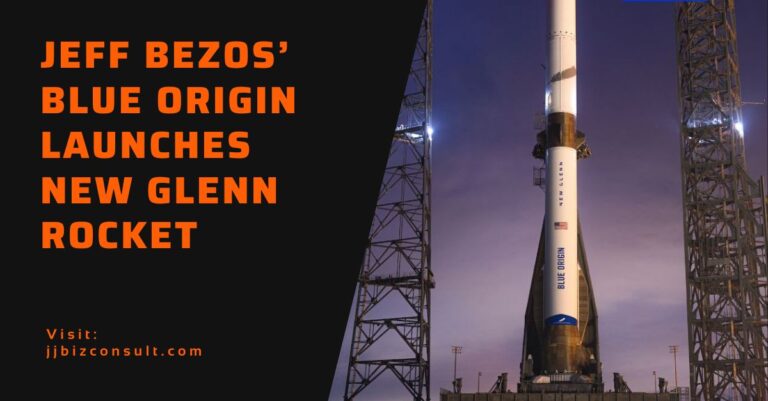
Bitcoin Miners Turn Their Focus to AI: A New Digital Gold Rush
Bitcoin Miners Focus on AI: A New Digital Gold RushThe digital landscape is undergoing a seismic shift. As the cryptocurrency market, particularly Bitcoin, faces challenges, a new frontier is emerging: artificial intelligence (AI). Prominent Bitcoin mining companies are pivoting their operations, transforming their data centers into AI powerhouses.
The Bitcoin Halving and Its Impact on Bitcoin Miners:
The Bitcoin halving event, a programmed reduction in block rewards, has significantly impacted the profitability of Bitcoin mining. This economic downturn has compelled many miners to explore alternative revenue streams.
The Convergence of Bitcoin Mining and AI Infrastructure:
Interestingly, the infrastructure required for Bitcoin mining and AI data centers share striking similarities:
- Energy Consumption: Both operations are energy-intensive, requiring robust power supplies.
- Hardware Optimization: High-performance computing (HPC) is crucial for both Bitcoin mining and training AI models.
- Cooling Systems: Efficient cooling solutions are essential to maintain optimal performance in both environments.
These shared requirements make the transition from Bitcoin mining to AI infrastructure relatively seamless for companies like Lancium and Crusoe Energy Systems.
AI: The New Digital Gold Rush:
The burgeoning AI industry presents a lucrative opportunity for these companies. By repurposing their data centers and leveraging their expertise in managing large-scale computing infrastructure, Bitcoin miners can tap into the growing demand for AI computing power.
Challenges and Opportunities:
While the shift from Bitcoin mining to AI appears promising, it’s not without its challenges. The AI landscape is highly competitive, with tech giants like Google, Microsoft, and Amazon investing heavily in their AI capabilities. Bitcoin miners-turned-AI providers will need to differentiate themselves and offer unique value propositions to compete effectively.
The Future of Data Centers:
The transformation of data centers from Bitcoin mining hubs to AI powerhouses signifies a broader industry shift. As AI continues to advance, we can expect to see further convergence between these two sectors. This trend could lead to more specialized data centers optimized for AI workloads, driving innovation and efficiency in both the cryptocurrency and AI domains.
Bitcoin Miners Challenges specific to Transitioning from Cryptocurrency to AI services?

Transitioning from cryptocurrency mining to AI services presents several unique challenges:
1. Specialized Hardware Limitations
Bitcoin mining often relies on specialized ASIC (Application-Specific Integrated Circuit) hardware, which is optimized for SHA-256 hashing but not suitable for AI tasks. Transitioning to AI requires investing in new hardware, such as GPUs or TPUs, which are better suited for AI workloads.
2. High Computational Resource Requirements
AI model training and deployment demand significant computational resources. This includes not only powerful hardware but also substantial energy consumption, which can be a logistical and financial challenge.
3. Talent Acquisition
AI development requires specialized skills in machine learning, data science, and software engineering. Attracting and retaining talent with these skills can be difficult, especially for companies transitioning from a different industry.
4. Data Privacy and Security
Handling AI data involves stringent data privacy and security requirements. Companies must ensure compliance with regulations such as GDPR and CCPA, which can be complex and resource-intensive.
5. Regulatory and Compliance Issues
The regulatory landscape for AI is still evolving. Companies must navigate new and existing regulations, which can vary significantly across regions and industries.
6. Market Competition
The AI industry is highly competitive, with established tech giants like Google, Microsoft, and Amazon dominating the market. New entrants must find ways to differentiate themselves and offer unique value propositions.
7. Integration and Adaptation
Integrating AI capabilities into existing infrastructure and business models requires significant adaptation. This includes reconfiguring data centers, updating software, and ensuring seamless integration with existing systems.
8. Financial Investment
Transitioning to AI services involves substantial financial investment in new hardware, software, talent, and infrastructure. Securing the necessary funding and managing these investments can be challenging.
Despite these challenges, the potential rewards of tapping into the growing AI market can be substantial. Companies that successfully navigate these obstacles can position themselves at the forefront of the next digital revolution. What aspect of this transition do you find most challenging or interesting?
How do Bitcoin miners handle the transition to AI expertise?

Transitioning from Bitcoin mining to AI expertise involves several strategic steps:
1. Leveraging Existing Infrastructure
Bitcoin miners already have data centers equipped with high-performance computing (HPC) hardware and robust cooling systems. These facilities can be repurposed for AI workloads, which also require significant computational power and efficient cooling.
2. Acquiring AI Talent
To effectively pivot to AI, companies need to hire or train personnel with expertise in AI and machine learning. This includes data scientists, AI researchers, and engineers who can develop and manage AI models.
3. Partnerships and Collaborations
Forming partnerships with established AI companies or academic institutions can provide access to cutting-edge research and technology. Collaborations can also help in gaining credibility and accelerating the transition process.
4. Investing in AI Software and Tools
Investing in AI-specific software, frameworks, and tools is crucial. This includes platforms like TensorFlow, PyTorch, and other machine learning libraries that facilitate the development and deployment of AI models.
5. Adapting Business Models
Bitcoin miners need to adapt their business models to focus on AI services. This might involve offering AI-as-a-Service (AIaaS), providing cloud-based AI solutions, or developing specialized AI applications for various industries.
6. Regulatory Compliance
Ensuring compliance with data privacy and security regulations is essential when handling AI data. This includes adhering to standards like GDPR, CCPA, and other relevant laws.
7. Continuous Learning and Development
The AI field is rapidly evolving, so continuous learning and development are vital. Companies must stay updated with the latest advancements and trends in AI to remain competitive.
8. Marketing and Positioning
Effectively marketing their new AI capabilities and positioning themselves as credible AI service providers is crucial. This involves highlighting their expertise in managing large-scale computing infrastructure and their ability to deliver high-performance AI solutions.
By following these steps, Bitcoin miners can successfully transition to AI expertise and tap into the growing demand for AI computing power. What aspect of this transition do you find most intriguing?
How do companies balance their existing Bitcoin mining operations with AI services?
Balancing Bitcoin mining operations with AI services involves strategic planning and resource management. Here are some key approaches companies use:
1. Dual Infrastructure Utilization
Companies can design their data centers to support both Bitcoin mining and AI workloads. By using modular infrastructure, they can allocate resources dynamically based on demand. For instance, during periods of low Bitcoin profitability, more resources can be diverted to AI tasks.
2. Peak Load Management
During peak electricity pricing periods, companies might prioritize AI tasks, which can be scheduled flexibly, over Bitcoin mining, which requires continuous operation. This helps in optimizing energy costs and maximizing profitability.
3. Hybrid Business Models
Some companies adopt a hybrid business model, where they continue Bitcoin mining while gradually scaling up their AI services. This approach allows them to maintain a steady revenue stream from mining while exploring new opportunities in AI.
4. Energy Efficiency Improvements
Investing in energy-efficient technologies and renewable energy sources can reduce operational costs for both Bitcoin mining and AI services. This includes advanced cooling systems, energy-efficient hardware, and renewable energy partnerships.
5. Strategic Partnerships
Forming partnerships with AI-focused companies can help in sharing resources and expertise. This collaboration can lead to more efficient use of infrastructure and faster development of AI capabilities.
6. Flexible Workforce
Training existing staff in AI technologies and hiring new talent with AI expertise can create a flexible workforce capable of managing both operations. Cross-training employees ensures that the company can adapt to changing demands.
7. Financial Diversification
Diversifying revenue streams by offering AI services alongside Bitcoin mining can provide financial stability. This reduces the risk associated with the volatility of the cryptocurrency market.
8. Continuous Monitoring and Optimization
Regularly monitoring the performance and profitability of both operations allows companies to make data-driven decisions. This includes adjusting resource allocation, optimizing processes, and scaling operations based on market conditions.
By implementing these strategies, companies can effectively balance their Bitcoin mining operations with AI services, ensuring sustainable growth and profitability. Which of these strategies do you think is most effective?
Some Successful Examples of Bitcoin Miners Transitioning to AI?

Several Bitcoin mining companies have successfully transitioned to AI, leveraging their existing infrastructure and expertise. Here are a few notable examples:
1. Hut 8 Mining Corp.
Hut 8 began its pivot to AI early, investing in data centers and cloud regions dedicated to high-performance computing (HPC). This move has allowed them to offer AI computing services, reducing their reliance on Bitcoin mining.
2. Iris Energy
Iris Energy, a Texas-based mining company, has expanded its high-performance computing data center strategy to include AI. This expansion has been well-received by investors, with shares surging following the announcement.
3. Applied Digital
Applied Digital, another Texas-based company, announced a significant deal to host AI cloud computing in its data centers. This strategic shift has also been positively received by the market.
4. Hive Digital Technologies
Hive Digital Technologies has integrated AI computing operations into its business model. This diversification helps mitigate the risks associated with the volatile cryptocurrency market.
5. Bit Digital Inc.
6. Terawulf Inc.
These companies exemplify how Bitcoin miners can successfully transition to AI, tapping into the growing demand for AI computing power while mitigating the risks associated with cryptocurrency mining. Which of these examples do you find most interesting?
Bitcoin Halving 2024: JPMorgan’s Take on the Rally
How to Improve Ethereum Mining Setup
BlackRock’s IBIT: The World’s Largest Bitcoin Fund. Spot Bitcoin ETFs Take Center Stage





